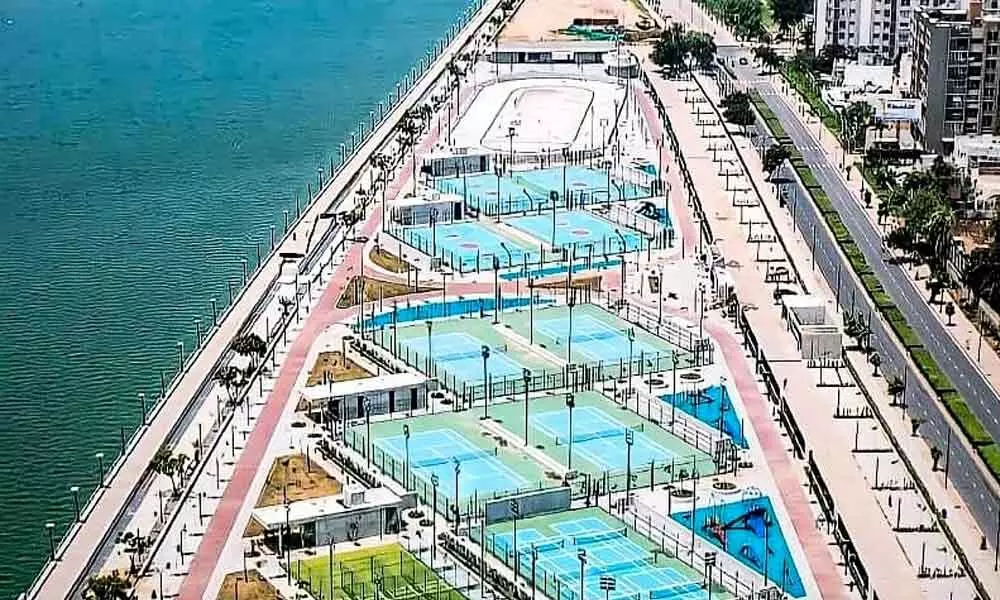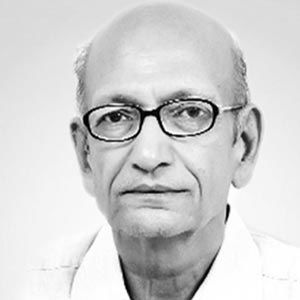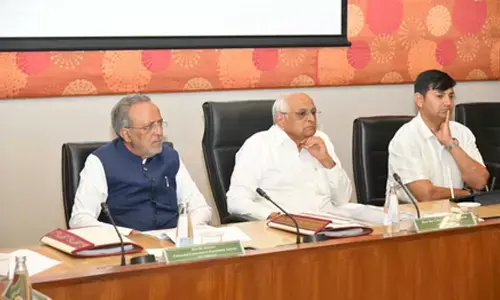Give Riverfront Back To The River

Give Riverfront Back To The River
It is proposed that the Yamuna riverfront be developed on the lines of Sabarmati riverfront.
It is proposed that the Yamuna riverfront be developed on the lines of Sabarmati riverfront.
Certainly, Ahmedabad has benefitted from the riverfront development. Places have been made for washer men and weekly markets. Displaced persons have been settled elsewhere. The width of the riverbed has been reduced from 382 meters to 275 meters and around 80 per cent of the land reclaimed has been kept open. Tree plantation has been done on a part of the reclaimed land. More importantly now, Sabarmati is ever full and brimming with water. This is not only enjoyable but also helps recharge the groundwater.
This model has been adopted in the development of the Thames riverfront in London. Many countries of the world, however, have implemented a different model of riverfront development in the recent years. The riverbed is widened instead of being constricted. Some countries have purchased land on the riverbanks and left it open, that is, so to say, given it back to the river. The widened riverbank is planted with trees and inhabited with wildlife and the river is enabled to flow in her earlier natural condition.
We get land by reducing the width of the riverbed as done in the Sabarmati model. We obtain economic progress by building houses and offices on part of the reclaimed land. We reduce the land available in the alternative model and plant dense trees and populate the riverfront with wildlife such as tortoise and deer. This leads to increase in the price of land near the expanded riverfront just as a house facing the park fetches higher price than a house in the narrow lane. This increase in price also adds to the GDP just as increased area adds to the GDP.
The alternative model is especially beneficial for India because the share of services sector such as hospital, university and software parks is rising sharply. The greenery and naturally flowing river is good for such offices just as eating small numbers of roti with vegetables is more beneficial than eating large numbers of roti without vegetables.
Our tradition addresses our rivers as 'Mother.' Prime Minister Narendra Modi has planned to make Varanasi located on the banks of the Ganga as a global psychic capital. He had said "Mother Ganga has called me to Varanasi." The Prime Minister has deep respect for the psychic powers of the Ganga. The same holds for the Yamuna. Prayagraj is venerated because here the two rivers bringing their psychic charges meet with each other.
Japanese scientist Masaru Emoto pasted a label saying "Love" on a bottle of distilled water; and another label saying "Anger" on another bottle. 24 hours later he found that the water crystals made from the water from the bottle saying "Love" were beautiful while those made from the water of bottle saying "Anger" were ugly. This establishes that water has the capacity to absorb psychic waves. The water of Yamuna brings the psychic power of Yamunotri. However, almost all water of the Yamuna is removed for irrigation at the Hathnikund Barrage above Yamuna Nagar. The Yamuna is often completely dry between Panipat and Sonipat. Thus, it is necessary to release sufficient quantity of original water of the Yamuna from Hathnikund so that the psychic charges from Yamunotri reach Delhi and energize its people.
The government must assess the economic benefits from giving Yamuna water for agriculture; and the economic benefits from giving the same Yamuna water for flow near the software parks in Delhi. My assessment is that the benefit from the same quantity of water to the software parks would be only Rs 1,000 from agriculture against Rs 1,00,000 from the software parks. Delhi can give adequate compensation to Haryana for releasing the water out of this additional income. Then release of more water from Hathnikund will become beneficial both for Haryana and Delhi.
This potential benefit of riverfront is not being obtained in the Sabarmati model. The water of Sabarmati is wholly removed by a dam upstream of Ahmedabad. Then water from the Narmada is put into the Sabarmati. Another dam downstream prevents the Narmada water from flowing into the ocean. The Sabarmati riverfront is a 10-km-long lake of stagnant water of Narmada. It is doubtful that this water has the psychic power of Narmada because the water comes here after crossing many hurdles for a long distance. It like the water from a shrine being passed through RO before giving to the worshipper.
We also need to examine which need of human beings we fulfill by making the riverfront. Psychologist Abraham Maslow had proposed a hierarchy of seven needs starting from "physical welfare," "safety," "connectedness," "self-respect," "knowledge," "aesthetics," and "self-actualization." We fulfill the lower needs of "physical welfare" and "safety" in making concrete riverfronts and expanding the land area. We fulfill the higher needs of "knowledge," "aesthetics," and "self-actualization" in expanding the greenery. The citizens of Delhi will then be able to enjoy the nature and free flowing water of the Yamuna and get health benefits as well.
Scientists have said that Delhi is facing a danger of massive floods. Making the Yamuna flow between concrete walls will reduce her capacity to carry the flood waters. Normally, the riverbed of a river is of 'V' shape. The water spreads as more water comes from upstream and its level rises less. The riverbed of a river flowing between concrete walls becomes of 'U' shape. The water is not able to spread as more water comes from the upstream and its level increases hugely leading to floods.
We need to dispassionately examine the two models of riverfront development for all the rivers of the country. The river can be kept full of water irrespective of whether we constrict or expand her riverfront. Benefits such as places for washer men, weekly markets and groundwater recharge will be obtained in both the models. The difference is that the quantity of land is increased and agriculture is expanded in the Sabarmati model. The value of land is increased and hospitals, universities and software parks will be expanded in the alternative model. The citizens will get the psychic energy from the freeflowing rivers, their higher needs will be fulfilled and the danger of flood will be less. The government should take a decision after studying the two models.
(The author is former Professor of Economics at IIM, Bengaluru)
(The opinions expressed in this column are those of the writer. The facts and opinions expressed here do not reflect the views of The Hans India)














